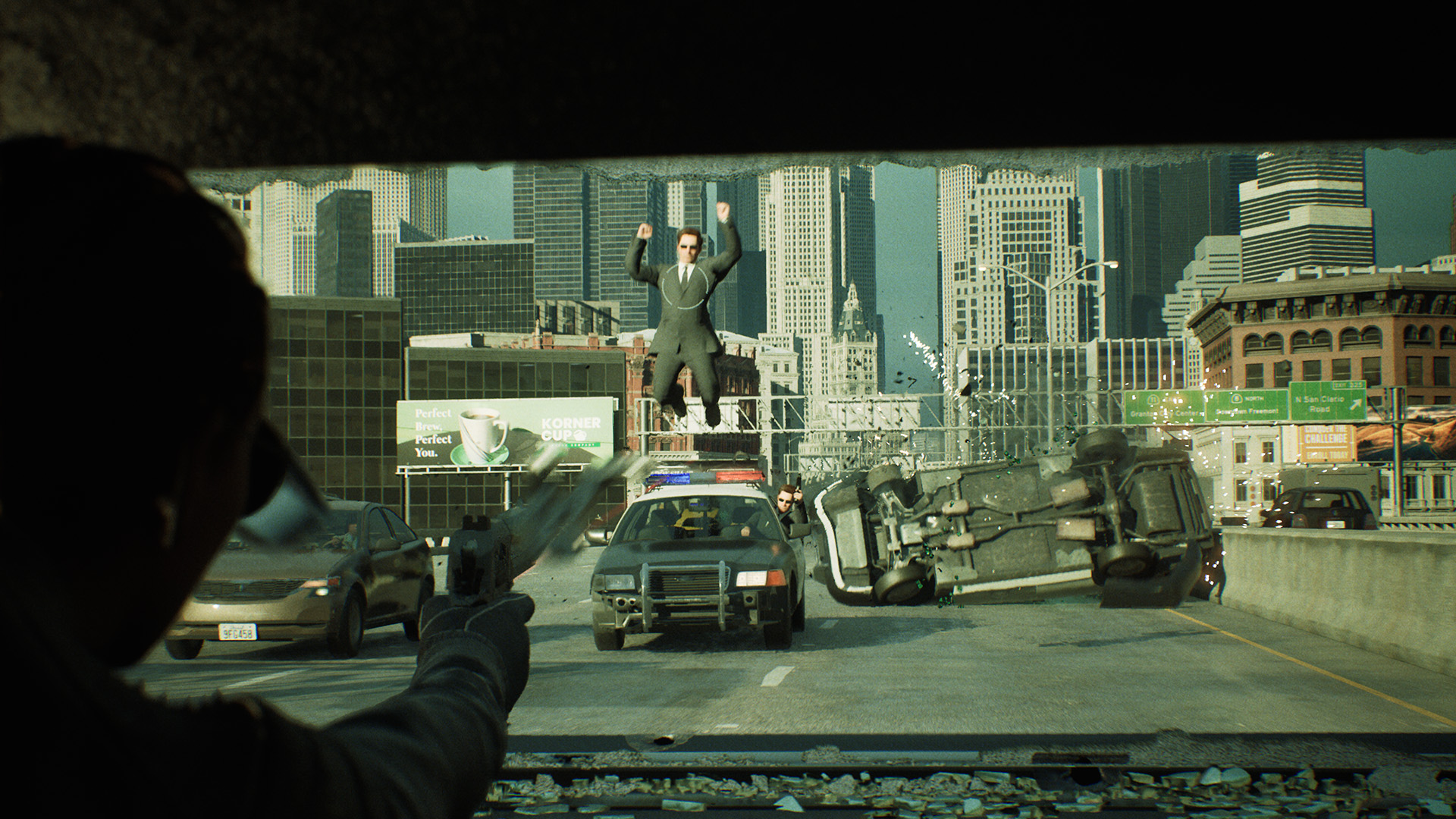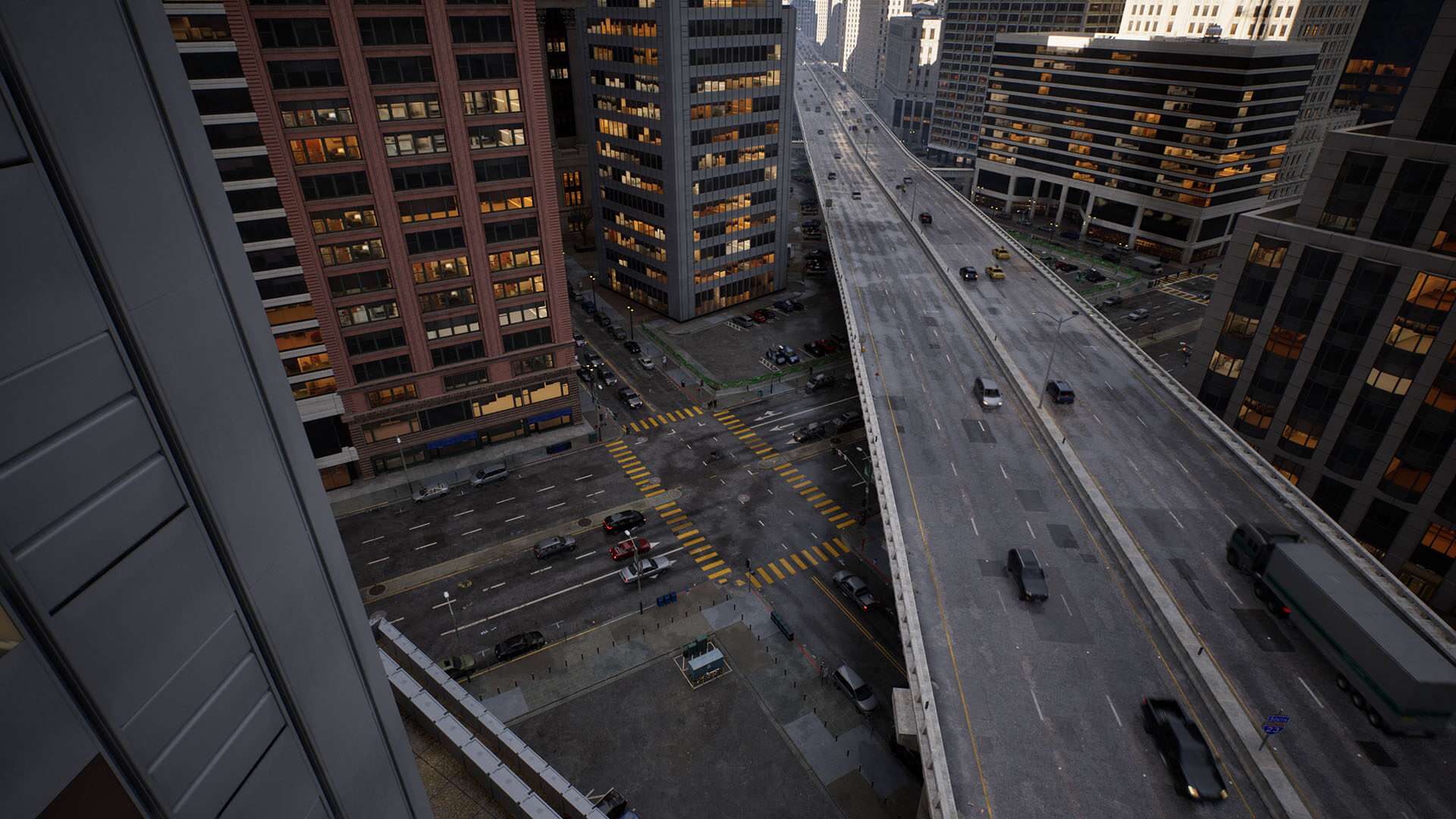
The Matrix Unreal Engine 5 demo made me a believer in next-gen
We recently passed the one year anniversaries of both the Xbox Series X/S and PlayStation 5, and I think it’s safe to say that this has been one of the weirdest first years of any console generation. As far as new, next-gen exclusive releases are concerned, we’ve only received a handful of notable titles: The Medium, Ratchet & Clank: Rift Apart, Destruction AllStars, Deathloop, Hell Let Loose, and the Demon’s Souls remake are the only ones that immediately pop into mind. Everything else was either cross-gen or “enhanced” versions of previously released last-gen titles. As much as I enjoyed most of those games, I can’t say my hair was blown back, especially considering one was a remake of a game from 2009 and another was a console port of a PC game I’d already been playing for a year or so.
Because of this lack of next-gen exclusives—due to the impact that the COVID-19 pandemic, as well ongoing pressures to reduce crunch culture in video game development, have assumedly had on release schedules—the messaging around the new consoles has been somewhat muddy and confusing. The best reason to get a new console (if you can even find one) is to play better versions of older games or better versions of games that are also coming out on the hardware you already own. Yeah, a weirdo like me can find playing Sekiro: Shadows Die Twice in 4K at 60 frames per second to be a religious experience, but the general gaming public would probably prefer having new games that fully take advantage of the hardware they spent their hard-earned hundreds on.
Enter: The Matrix.
The 2021 Game Awards was a big night for Unreal Engine 5, and for next-gen gaming in general. During the show, not only did Senua’s Saga: Hellblade II show off what the new engine can do, but Epic also dropped The Matrix Awakens, a demo that anyone with a Xbox Series X/S or PlayStation 5 can download and play. After spending about 90 minutes or so with the demo, I can safely say I’m a next-gen believer.
As far as settings for a tech demo that shows off a new game engine which further blurs the lines between the real and the digital, The Matrix is probably as on the nose as you can get. Keanu Reeves and Carrie-Anne Moss, acting as our tour guides, start blurring those lines right off the bat, as both their real images and digital selves, as themselves and as their iconic characters, Neo and Trinity. Morphing between their current versions and their younger selves, asking about the nature of our reality, they strike me as the perfect ambassadors for next-gen, and for stating its case to aging millennials like myself. I don’t give a damn about “boomer” sci-fi icons like Luke Skywalker or Princess Leia; Neo and Trinity are the silver screen heroes that pull at my tender, cholesterol-encrusted heart strings.
After a short, theoretical diatribe the retreads familiar ground like the digital era’s impact on entertainment, the nature of reality and self-perception—you know, the hits—Neo and Trinity whisk us away to a high-speed chase through the streets of a familiar unnamed, faceless, endless city. Why a car chase? Obviously because the “marketing people” decided the demo needed one, Trinity explains.
“Marketing?” Neo is incredulous. “I thought we had total creative control.”
“Welcome to the Matrix,” Trinity remarks.
You might be asking, Is recapping a cutscene all that important when talking about what is essentially a tech demo for a new game engine? And the answer is, I don’t know, man, but can you just give me this one?
Video games have come very far in terms of the maturity of their storytelling techniques. I don’t just mean maturity in terms of what happens in the stories, but more in how they tell them, the way that they use the visual language of cinema, and the artistry and craft that goes into bringing stories to life. But I also think that, maybe even by necessity, there’s still a big gap between a great cinematic or televisual story and a great video game story. After all, games still must be fun to play above all else and tell a story whenever they can, while purely visual stories can take time to luxuriate in character, plot, theme, and subtext.
Epic could have done anything with this demo. It could have let us simply play through that segment of a woman bouncing around a canyon. Instead, it chose one of the most significant sci-fi properties of the last 50 years and made a statement: Video game engines (particularly Unreal Engine 5) are now just as legitimate as soundstages and cameras in terms of tools for bringing visual stories to life.
Of course, the next 10 or so minutes of the demo are when the bulk of that argument is made. Taking control of a new recruit in the fight against the machines, at Trinity’s instruction, the player proceeds to shoot out the tires of all the cars driven by the Agents chasing you.
The high-speed chase through anonymous city streets is predictably stunning, most notably in the particle effects, explosions, and lighting. It’s all very exciting, but it is an on-rails segment, one where the camera is very specifically pointed in a narrow field of view. You don’t even freely aim at the tires; a lock-on system takes care of that for you. While visually impressive, the car chase definitely feels heavily controlled and choreographed.
It’s what comes after the car chase that blew my mind—maybe the most my mind has been blown since 2001 when I played Grand Theft Auto III and Metal Gear Solid 2: Sons of Liberty for the first time, or even further back than that, when Mario first wahooed his way across a 3D courtyard outside of Peach’s castle.
Post–car chase in The Matrix Awakens, a quick pan over the city shows off UE5’s technical trickery. You get to see the realistic lighting, the advanced pathing options, and all of the little triangles that form the basis of its environments which make the engine’s advanced destruction even possible. Moments later, you’re placed on the street as your stand-in character and let loose on the city. You can walk around, you can fly the camera wherever you want, and you can even drive the cars that are parallel parked along the streets.

There is a ton to take in, but the first thing that really impressed me about Unreal Engine 5 is its lighting. As good as video game lighting has gotten, there’s still something that has seemed off. It never really looks like how our eyes perceive light, but rather how our brains wished our eyes would perceive light: with a flair for the dramatic. The lighting in Matrix Awakens just looks real, and sometimes that means it ain’t always pretty. And that’s a good thing, at least depending on the tone and environment you’re trying to create.
Time-lapsing the sun around the city, it becomes clear just how powerful a tool the lighting in Unreal Engine 5 can be. Now matter where you place the lighting source, its interactions with the world’s various surfaces maintained its realism.

The other thing that really impressed me about the engine was its draw distance and its scope. Raising the camera above the city, there’s virtually no limit on the draw distance. The cars on the street are still completely visible. It’s like taking off from the LAX runway and seeing the world beneath you, still perfectly preserved. At a distance, and with the demo’s excellent sound design, it creates the sense of a real, lived-in city.

As far as textures are concerned, that’s where the demo starts to drift away from reality slightly. The stuff on the ground—you know, the stuff that you would generally experience because it’s right in front of you—is extremely detailed, as it needs to be to fully showcase the lighting. If you bring the camera to areas where the developers might not expect you to look, then you can find some rough patches. Still, that probably has nothing to do with the engine itself and more to do with the fact that this demo was put together by a small team that didn’t want to waste its time modeling every single tiny nook and cranny. Ninety-nine percent of the time, it looks amazing.

Other than that, the framerate can get a little rough when driving super fast, there’s a lot of visual stippling when moving the camera around a lot, and the characters themselves look kind of goofy. It is easy to say “it’s just a demo,” but this is supposed to be a showcase of how the engine really holds up under scrutiny. It’s okay to be a little concerned that the fully 4K, 60 frames per second future that Xbox and PlayStation both promised us might not be completely possible when the new game engines start becoming the norm.
But it’s hard to stay skeptical when walking around, gawking at the scenery, or crashing into a parked car and seeing how realistically the impact is rendered. What really matters is that Matrix Awakens is just a tiny sliver of what the future holds for gaming. After a year where “next-gen gaming” stumbled out of the blocks, the Unreal Engine 5 demo shows that the future really is just around the corner. And I, for one, can’t wait.
All images captured in-game on Xbox Series X/S. They have been downscaled to 1080p.

Michael Goroff has written and edited for EGM since 2017. You can follow him on Twitter @gogogoroff.